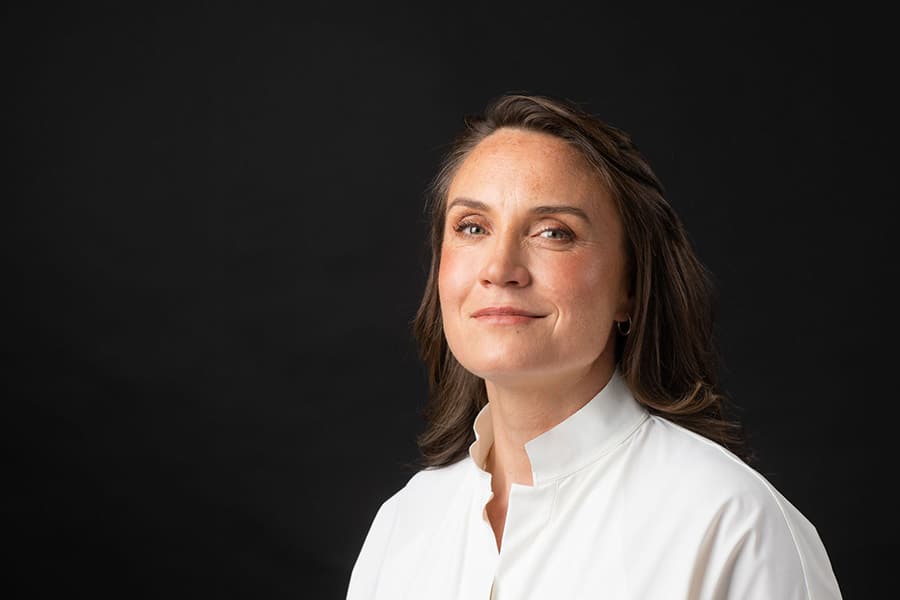
More than two decades ago L'Oreal and UNESCO – two entities grounded in the power of science – joined ranks to foster greater participation and opportunities for women in science. At the time, it was clear that there were simply not enough women in STEM (Science, Technology, Engineering and Medicine) and so, together they founded the For Women in Science program. Each year, the program recognises the trailblazing female scientists who, at the beginning of their career are making waves in their field by awarding them with a Fellowship to further their research.
In 2021, Dr. Mahdokht Shaibani and Dr. Kirsty Nash were two of five women awarded the For Women in Science Fellowship. Dr. Shaibani is a battery engineer and advocate at Monash University working to establish an independent battery supply chain in Australia. Dr. Nash is investigating the potential for climate change to affect the micronutrients available in coral reef fish. Both areas of research are critical in the fight against the climate crisis.
Below, we speak with both Dr. Shaibani and Dr. Nash about their field of research, the climate crisis, and the freedoms the L'Oreal Fellowship has afforded them as women in STEM.
Climate change could have a significant impact on the micronutrients we get from eating fish
As Dr. Kirsty Nash researches the impact climate change will have on coral reef fish, her line of work focuses on coral reefs themselves. These reefs mostly surround the coastlines of developing nations where the communities rely on coral reef fish as a significant part of their diets. So while Dr. Nash is yet to conclude whether climate change will have a positive or negative effect on the micronutrients available in different coral reef fish, and has noted that it could vary from species to species, the fallout from micronutrient deficiencies are grave.
"I’m mostly focusing on Calcium, Zinc, Selenium, Iron, and Vitamin A. The reason I’m focusing on these is that there are a wider range [of micronutrients] that we’re not necessarily getting enough of, but those are the ones that you find a lot of in fish in a form that we can easily digest — so ones that we could potentially get a lot of from fish and really benefit from."
"We know having these micronutrients in your diet can have a real impact on both physical development but also cognitive development. Just to give you an example, if we take Vitamin A, it’s been linked to about 500,000 cases of preventable child blindness each year when you have children that don’t get enough Vitamin A in their diet. That’s just one micronutrient and that’s the scale of the problem."
Batteries play an integral role in making the transition to renewable energy
At this stage, not only are we acutely aware of just how destructive fossils fuels are on the planet, but we also cannot ignore the way Australia uses coal as a political and economic crutch. And as Dr. Mahdokht Shaibani points out, now is the best time for Australia to phase out fossil fuels. Why? Because Australia's "power stations have aged and are becoming increasingly unreliable," she says.
"Hundreds of millions could be spent to upgrade these coal burning power stations to enable them for decades to come. Or alternatively the energy provider companies could seize the opportunity to transition away from coal fired power to renewable," Dr Shaibani continued.
"Batteries are instrumental to stabilise these unreliable aged coal burning power stations as they move towards their replacement with clean energy. And also at the later stage to be fully powered by renewable energy we obviously need a lot more of these batteries."
"The good news is that some big players such as Origin Energy have already started to demonstrate their commitment to such a transition. They have unveiled their plans to build giant capacity batteries at some of their coal fired power stations that are capable of partially supporting our grid. Whether we make this transition and also the cost effectiveness of this transition is unfortunately not in our control because the means for the transition is batteries and unfortunately we don’t make batteries in Australia. We have to outsource this."

Australia has all the natural resources it needs to establish a battery industry
As it stands, Australia is the only country in the world blessed with all ten of the key mineral deposits that are required to make lithium-ion battery electrons. However, as Dr Shaibani notes, "in the words our Prime Minister, we are only 'really good at digging stuff [these materials] up' and shipping them".
"So we do not refine these materials here in Australia. We mainly ship them to China where they do the refining and this means they control the market and sell it at a profit as well. China has monopolised the battery supply chain. Pretty much 80% of the refined battery materials come from China."
For a country that claims to be at a loss without coal, it is sleeping on another, more powerful industry opportunity in its own backyard. And despite the minor complications that would arise when establishing a battery industry, these could easily be fixed. Dr Shaibani explains further, below.
"You have to take the raw minerals that you dig straight up from the earth and then you have to refine them into materials that are directly usable in battery applications. For that you’re going to need giant refining plants and the cost of Australian manufacturing is high. Everybody knows that. Also, running such plants on their own requires a lot of energy and the cost of electricity in Australia is also high."
"Now there are two solutions to that: one is moving towards automation, not relying so much on manpower to reduce the cost of manufacturing. Also, at the same time that Australia is blessed with minerals it is also blessed with renewable energy: sun and wind. So we could benefit from those renewable energies to power these refining plants. It’s not like we don’t have options, we do have options but we just need the willpower at this stage."
Transitioning to renewable energy will create more jobs, not less
When phasing out coal, there is always concern for those who rely on the industry for their income. Dr. Mahdokht Shaibani assures us that this transition will create more jobs not less.
"The number of engineering jobs and mining jobs that are accompanied with the transition from coal burning power stations to renewable stations are actually increasing quite rapidly across the globe," she says. "It’s not right for Australia to be an observer. As jobs disappear on coal fired stations, we could replace them with more influential jobs, better paid jobs, and yes, we could actually create a whole new engineering job market for Australian engineers that, at the moment, are having to migrate abroad because they can’t find them here."
You can help scientists gather data on climate change
Dr. Kirsty Nash reminds us that if we want to get involved in climate-focused scientific research there's "loads of really great citizen science programs going on".
"For example there’s something called RedMap which is run out of the University of Tasmania. If you go diving or snorkelling anywhere in Australia and you see a marine creature that you think is unusual for that area, you can take a photo and upload it and then the scientists use that information to keep track of how climate change is impacting where species are shifting around the country. That particular program has been massively useful for scientists here to build that understanding of the impact climate change has on the redistribution of marine species," Dr. Nash says. "And that’s just one example. There are a lot of citizen science programs out there whether it’s astrophysics or the Powerful Owl Project."
Lithium-ion batteries vs. Lithium-sulfur batteries
Within the battery world there are two main types. Lithium-ion batteries and lithium-sulfur batteries. When discussing batteries, what many people are referring to is the lithium-ion kind. There are some key differences between the two, and their impact on the environment differs greatly between each one. Dr Shaibani does into detail underneath.
"So as of the past few years [climate scientists] have started to reveal some so-called ‘dirty secrets’ behind the production of lithium-ion batteries. It turns out for example, that the net impact of electric vehicles is not as positive as we thought it was because the production of lithium-ion batteries on its own is accompanied by a lot of carbon dioxide emissions. That’s why I’ve taken the route of making greener batteries."
There are a couple of strategies that battery engineers could take [to create greener batteries]," Dr Mahdokht Shaibani says. "One is to look at entirely new battery chemistries such as the one that I’m working on which is called lithium-sulfur batteries. As opposed to lithium-ion batteries which are a seriously mineral intensive battery technology that heavily relies on heavy metals such as nickel and cobalt that are not only toxic, but also mining them is accompanied with a lot of environmental and humanitarian issues."
"Lithium-sulfur batteries do not involve the use of any heavy metals. It relies on sulphur which is an earth abundant material and it’s not toxic and you can find it pretty much all over the world. That’s one option."
"The other option is to move toward climate responsible mining of the raw materials that are currently used in lithium-ion batteries. Mainly nickel, cobalt and lithium. So we need to look at the innovative and responsible ways of mining for these materials."

Scientific research is collaborative and multidisciplinary
Dr Kirsty Nash has noticed from talking to people about her research "that people imagine that it’s just me sitting in a room doing the research and covering all these areas by myself."
"I think it’s often misunderstood how interdisciplinary this research is and how I draw on people," she says. "I work with people who are public health professionals, people who are nutritionists and people who are experts on climate change. You really need all these people to come together to do this sort of research. It’s not a sole scientist sitting in a room coming up with the answer. So I think often when I speak to people they don’t understand what a team effort it is," she continued.
L'Oreal is removing barriers for women working in STEM
Since its inception over twenty years ago, the L'Oreal and UNESCO For Women in Science Fellowship has championed women in STEM, granting them visibility and financial support to continue their research. Even now, only 28 percent of researchers are women, with only 20 percent found in the most senior leadership positions. Not only that, but only 3 percent of Scientific Nobel Prizes have been awarded to women. That's why it's never been more pertinent to rally around women in and entering the industry.
For Dr. Kirsty Nash, the funding she received from the Fellowship has allowed her "to do a wider array of things that I otherwise would be able to do".
"The thing that the L’Oreal fellowship allows me is that it provides some support for childcare," Dr. Nash explains.
"There are so few fellowships out there that include childcare and that sort of support as part of the deal. With the For Women in Science program, not only does it fund my research but it funds the logistics and the practicalities of achieving that research," she says. "As an example, my family is in the UK and my husband's family is in the US, so they can’t get here at the moment anyway. So if I wanted to go away on fieldwork then we have no family here to help with that. Whereas now I have the capacity to put my daughter in for extra days at child care so I can actually go ahead and do the work. So I’m actually able to do research that I wouldn’t necessarily be able to achieve otherwise."
For Dr. Mahdokht Shaibani, the For Women in Science Fellowship has opened up opportunities to advocate for greener batteries.
"I’ve divided my career into two categories. One to be an experimental battery engineer, and the other one is to advocate for greener batteries and an independent battery supply chain in Australia. And that’s where L’Oreal’s mentorship has been instrumental to me, they have given me a voice," she says.
"I get to talk about my ambitions, I get to communicate the importance of moving toward renewables to not only the government, but to the general public."
"The very fact that as an engineer I am being recognised by L’Oreal. To me that’s a big change because I would say that if you look at the STEM disciplines, the E (Engineering) is the least visible in Australia. The one that I would say, culturally and historically has not been appreciated. So the very fact that as an engineer I am being recognised, I think that’s really awesome."
For more resources on climate change, here are 8 powerful things you can do to make an impact.



